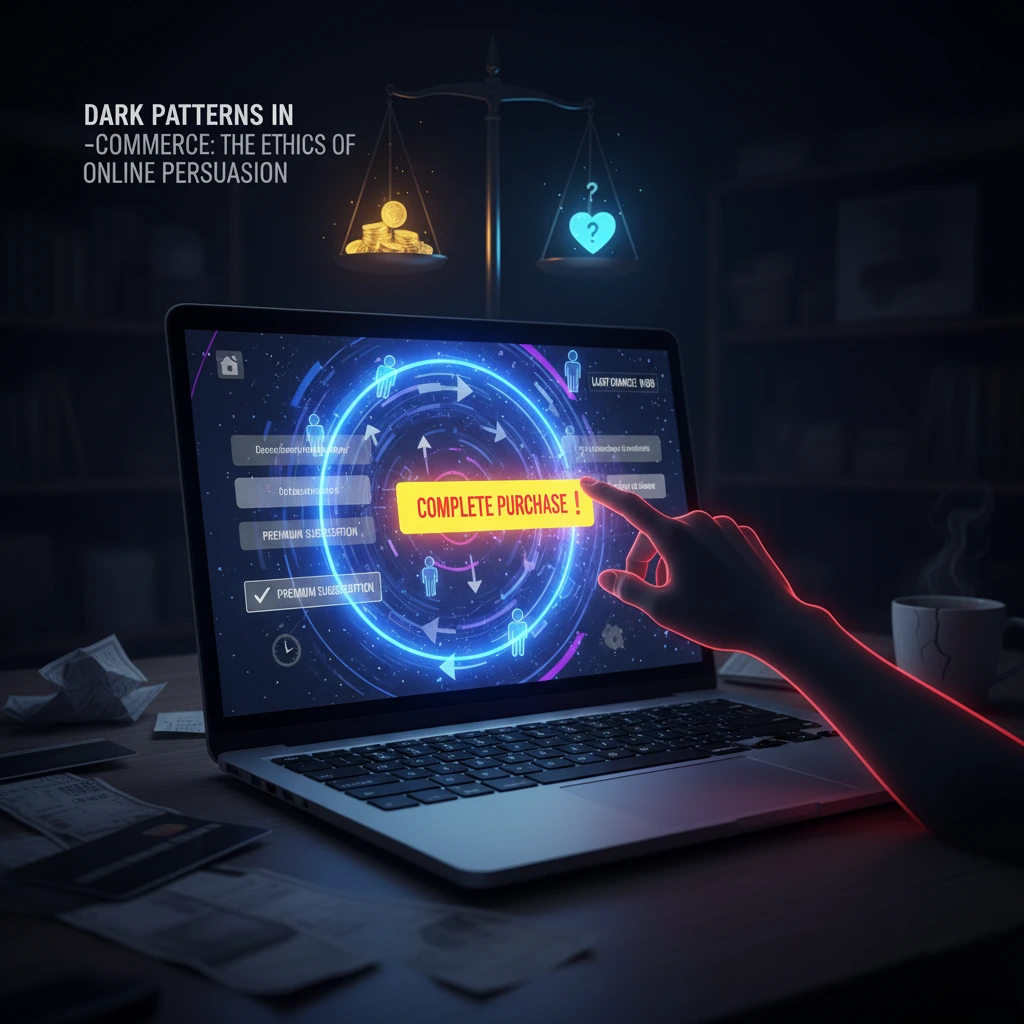Introduction
In today’s digital shopping landscape, E-commerce platforms are designed with precision to influence how consumers browse, click, and buy. Every color, button, and notification you see on a shopping website has a psychological purpose. But what happens when persuasion turns into manipulation? This is where dark patterns in E-commerce come into play. These deceptive design practices exploit user behavior to drive sales, collect data, or lock customers into unwanted commitments. As ethical E-commerce design becomes a growing concern in 2025, understanding and addressing dark patterns is crucial for building customer trust and brand loyalty.
What Are Dark Patterns in E-Commerce?
Dark patterns are user interface (UI) and user experience (UX) design choices that intentionally mislead users into taking actions they didn’t intend. These can include tactics like pre-checked boxes for subscriptions, hidden fees revealed at checkout, or misleading “limited stock” messages. While these methods may increase short-term conversions, they ultimately damage long-term brand reputation.
Common examples include:
- Forced Continuity: Customers sign up for a free trial, only to find themselves charged automatically once it ends.
- Hidden Costs: Extra charges appear just before checkout, discouraging cart abandonment.
- Confirmshaming: Making users feel guilty for opting out of offers (e.g., “No thanks, I don’t like saving money”).
- Trick Questions: Complex wording that confuses users into agreeing to something they don’t want.
- Sneak into Basket: Adding extra items to a cart without explicit consent.
These manipulative techniques prey on human psychology, using scarcity, urgency, and social proof to drive impulsive decisions.
Why E-Commerce Brands Use Dark Patterns
The primary motive behind dark patterns is conversion optimization. Online retailers constantly compete for consumer attention and sales. The difference between a customer completing a purchase or abandoning a cart can depend on subtle design cues. Many digital marketing teams use A/B testing, behavioral analytics, and conversion rate optimization (CRO) to maximize engagement. Unfortunately, this data-driven approach can blur the line between persuasion and deception.
With rising customer acquisition costs and competitive marketplaces like Amazon, Shopify, and WooCommerce, businesses often feel pressured to use any means necessary to boost sales. However, while dark patterns might yield short-term revenue spikes, they undermine long-term customer retention and brand credibility.
The Ethical Implications of Dark Patterns
In 2025, ethical design has become more than a buzzword—it’s a business necessity. Customers are becoming more aware of manipulative tactics, and they’re quick to call out unethical behavior on social media. Platforms like Reddit and X (formerly Twitter) are filled with user complaints about deceptive checkout flows, misleading ads, and unauthorized subscriptions.
Ethically, dark patterns violate the principle of informed consent. They exploit cognitive biases and limit user autonomy. For instance, when an online retailer hides the “unsubscribe” button or requires multiple steps to cancel a subscription, they’re prioritizing profit over transparency. This can lead to customer distrust, legal scrutiny, and brand boycotts.
Legal and Regulatory Response
Regulators are taking action against deceptive design practices. The European Union’s Digital Services Act (DSA) and General Data Protection Regulation (GDPR) both include clauses addressing transparency and user rights. In the United States, the Federal Trade Commission (FTC) has also begun cracking down on dark patterns that mislead consumers.
In 2025, several major E-commerce brands have faced penalties for using misleading countdown timers, fake scarcity messages, and hidden data collection. These cases set a precedent for stricter enforcement. Compliance with UX transparency standards and consumer protection laws is now not just ethical but also financially prudent.
Building Ethical E-Commerce Experiences
To move beyond dark patterns, brands must embrace ethical UX design that prioritizes clarity, honesty, and user empowerment. Here are several strategies:
- Transparency in Pricing: Clearly display product prices, taxes, and shipping costs before checkout.
- Easy Opt-Out Options: Simplify subscription cancellation or account deletion processes.
- Honest Scarcity Messaging: Use real-time inventory updates instead of fake urgency tactics.
- Consent-Based Data Collection: Request explicit permission for cookies and marketing emails.
- User-Centric Design: Test design decisions with diverse audiences to ensure they serve genuine user needs.
By implementing these principles, E-commerce businesses can cultivate trust-based customer relationships, which are far more valuable than one-time sales.
The Role of Technology and AI in Ethical Design
Interestingly, the same artificial intelligence (AI) tools that power dark patterns can also be used for ethical personalization. AI can analyze user behavior to enhance customer experience without manipulation. For example, AI-driven recommendation engines can suggest products based on genuine interests rather than urgency triggers.
Moreover, machine learning models can detect unethical design trends and flag them for revision. Some forward-thinking E-commerce companies are even developing ethical AI frameworks to ensure transparency in product recommendations and pricing algorithms.
Impact on Brand Reputation and Customer Loyalty
Consumers today are more tech-savvy and conscious about online ethics. A single viral post exposing manipulative practices can harm a brand’s image overnight. On the other hand, companies that practice transparency and respect user autonomy are rewarded with organic loyalty and positive social media engagement.
A study from 2024 showed that 73% of online shoppers prefer brands that clearly communicate terms, pricing, and privacy policies. Ethical design not only reduces complaints and refunds but also strengthens Customer Lifetime Value (CLV).
The Future of E-Commerce Ethics
As digital commerce continues to evolve, ethical design will become a competitive differentiator. The next wave of successful E-commerce platforms will be those that integrate ethical UX, AI transparency, and sustainable business practices. Consumers will increasingly expect brands to act responsibly, from packaging choices to data privacy policies.
Future innovations like Web3 commerce, decentralized marketplaces, and blockchain-based verification will further empower users with greater control over their transactions and data. Ethical design won’t just be a choice—it will be the foundation of every credible online business.
Conclusion
Dark patterns in E-commerce highlight the tension between profit and principle. While manipulative designs can drive immediate sales, they erode the foundation of trust that long-term success depends on. In the era of ethical consumerism and AI-driven personalization, transparency, fairness, and respect for user autonomy must guide every design decision.
The ethics of online persuasion are evolving rapidly, and E-commerce brands that align with ethical standards will thrive in a marketplace increasingly defined by integrity and accountability. In 2025 and beyond, the question is not how to make users buy more—it’s how to help them buy better, smarter, and with full confidence.




